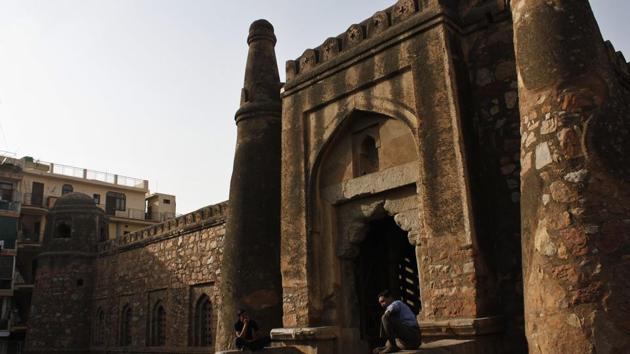Bat waste causing damage to 660-year-old Khirki mosque
Salt in bat excreta erodes stones and mortars, an official of the Archaeological Survey of India said, adding that instructions have been issued to keep the building well lit, especially at nights, to keep bats at bay.
The hundreds of bats inhabiting the Khirki mosque are causing damage to the structure built around 660 years ago. Salt in the excreta of the mammal erodes stones and mortars, an official of the Archaeological Survey of India (ASI) said, adding that instructions have been issued to keep the building well lit, especially at nights, to keep bats at bay.

NK Pathak, superintending archaeologist of the Delhi circle, ASI, said, “I have asked for lights to be put at the building to prevent bat habitation. Moreover, if the site is frequented by humans, the mammals will be discouraged to stay there.”
Despite its age, he said, the structure is in good condition, except for a few domes and pillars, which are showing sign of corrosion. “Bats have made holes in the domes and walls. We have decided to cover all crevices and openings with mesh to stop bats from infiltrating. We hope to complete the conservation work in four months,” Pathak said.
The ASI is likely to spend ₹70 crore on conserving the mosque — a project that started around two weeks ago.
“Bat urine and guano are acidic and can damage materials such as marble, timber and brass by staining them. Bat guano can also trigger algal and fungal growth, which, in turn, can cause problems for conservation and of historic buildings. This apart, bat droppings can spread diseases. People should avoid buildings where bats have been living for years,” said M Kamalakannan, senior zoological assistant at the Zoological Survey of India.
The Khirki mosque was built by Khan-i-Jahan Junan Shah, the prime minister of Firoz Shah Tughlaq in 1351-1354. Constructed at a raised square platform with major part of the courtyard covered with domed roof, the unique double storey structure has gateways flanked by tapering minarets on three sides — except on the western side. It can be reached through a flight of 20 stairs. The main entrance is on the east. The lower level of the structure is adorned with around 40 arches and a series of basement cells on all four sides.
“The covered courtyard pattern is found in just one other mosque in north India — the Kalan Masjid near Turkman Gate. Kalan Masjid was also built by Junan Shah during the same period,” said another ASI official.
Sohail Hashmi, who conducts heritage walks in the city, said although Junan Shah constructed seven mosques in Delhi, only four of them have survived.
“Only the mosques at Begumpur, Khirki, Turkman Gate, and Nizamuddin exist. Remains of the other three—in Kalu Sarai, outside Kabuli Darwaza or Khooni Darwaza, and in Feroz Shah Kotla have disappeared. Some believe the mosque at Feroz Shah Kotla was also built by Junan Shah,” Hashmi said.
Author and Delhi University History teacher Shama Mitra Chenoy said, “Finally, the ASI has turned its attention to this fabulous place, which had become a refuge for drug addicts. I found pile of garbage and empty bottles at the site. I hope it is restored to its pristine glory.”
Stay updated with all top Cities including, Bengaluru, Delhi, Mumbai and more across India. Stay informed on the latest happenings in World News along with Delhi Election 2025 and Delhi Election Result 2025 Live, New Delhi Election Result Live, Kalkaji Election Result Live at Hindustan Times.
Stay updated with all top Cities including, Bengaluru, Delhi, Mumbai and more across India. Stay informed on the latest happenings in World News along with Delhi Election 2025 and Delhi Election Result 2025 Live, New Delhi Election Result Live, Kalkaji Election Result Live at Hindustan Times.






